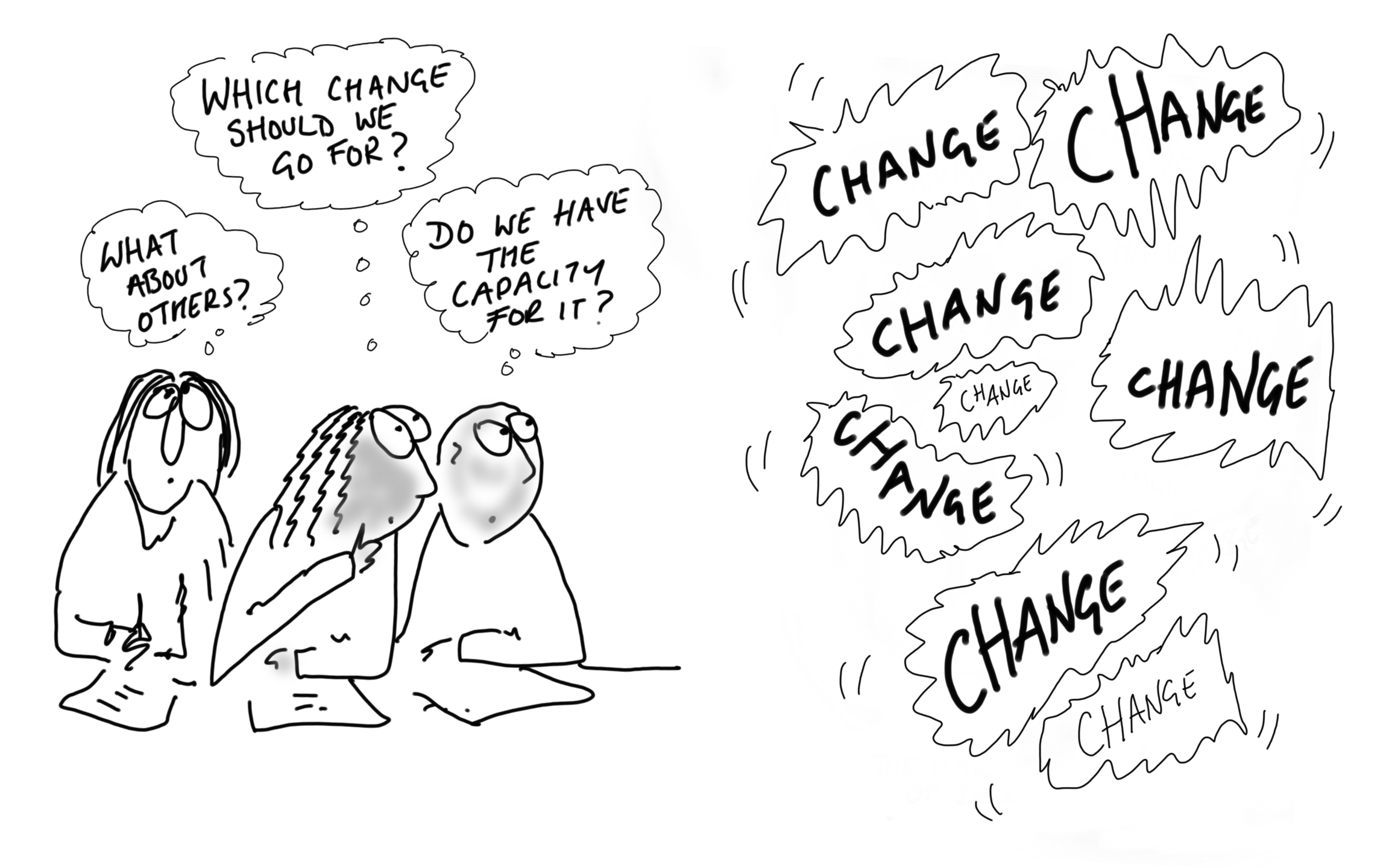Section 03: Identifying your advocacy goal
3.1: What is the long-term goal which your advocacy will contribute to?
Your long-term goal is your vision of the long-term change you want to see. It is what gives your advocacy its real sense of purpose and legitimacy. It is what motivates you to keep going, even when progress is very slow or when things feel like they are going in the wrong direction.
Examples of long-term goals:
Climate change: Global temperature rises kept below 1.5 degrees
Education: All children have access to education from 5 – 18 years old
Agriculture: Rural communities have secure livelihoods
Gender equality: Women and men have equal employment opportunities, conditions and pay
It is important to keep the long-term goal in your vision. But it is unlikely that your advocacy strategy alone will secure this goal. Multiple changes may need to happen in order for the long-term goal to be realized, and your organisation or coalition can’t advocate for all of them. So you need to decide which change your advocacy will focus on as a contribution to the long-term goal – your advocacy goal, in other words. This module will help you identify your advocacy goal.
3.2: Systems thinking tool to help identify the advocacy goal
You can complete this exercise with pen & paper & post-its or a whiteboard or online tools such as Mural, Miro, Google jamboards or Mindmeister. You can also use Word or Powerpoint. Your choice!
Write your long-term goal in the middle of your page/virtual canvas
Around the long-term goal, write down all the changes that need to happen for the long-term goal to be realized
Start with the bigger changes and then work outwards to the smaller changes
Insert arrows to indicate any connections between the changes. This may help you identify the really critical changes that will unlock lots of other changes
You have now produced what is known as a `systems thinking’ map – showing the whole system of changes needed and the connections between them
Discuss with your colleagues, partners (and ideally those directly affected by the issue) which change your advocacy will focus on. This will depend on a range of factors (see 3.3 below for common factors influencing your decision).
Insert a star or asterisk in your map next to the change which your organisation/coalition will seek to secure through advocacy
Articulate your advocacy goal as though the change you seek has been secured. One way of doing this is to imagine what the newspaper headline would read if your advocacy goal had been achieved.
Here you can find an activity guide to draw your own systems thinking map.
You may decide to select more than one advocacy goal – for example, when several changes you seek are connected in some way. But more than 3 advocacy goals is not recommended. The more focused your advocacy strategy, the more successful it is likely to be.
3.3: Common factors to consider when deciding which change to try secure through advocacy
Relative importance of the change - choose an advocacy goal which:
Is a `root’ change which will unlock other changes (or block other changes if not pursued)
Is important to those affected by the issue and to your organisation’s mission and stakeholders
External context - choose an advocacy goal on which:
There are upcoming opportunities to achieve this goal
The risks involved in seeking this goal are manageable
Your advocacy will either complement or strengthen the advocacy of others
Capacity and expertise – choose an advocacy goal which:
Fits your expertise, experience or analysis
You know quite a lot about: what it is you want to change, why it should change, and how it should change.
Allows you to integrate advocacy work with other work done by your organisation (eg. work on the ground with communities).
3.4: Examples of advocacy goals
Last updated
